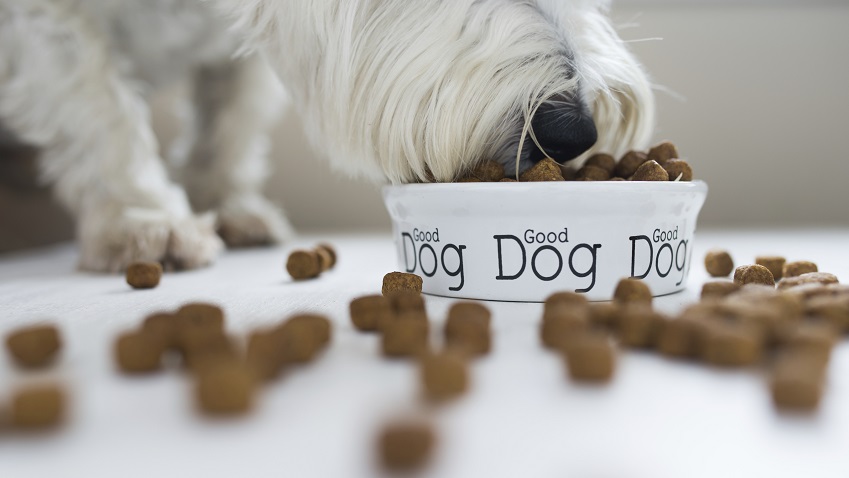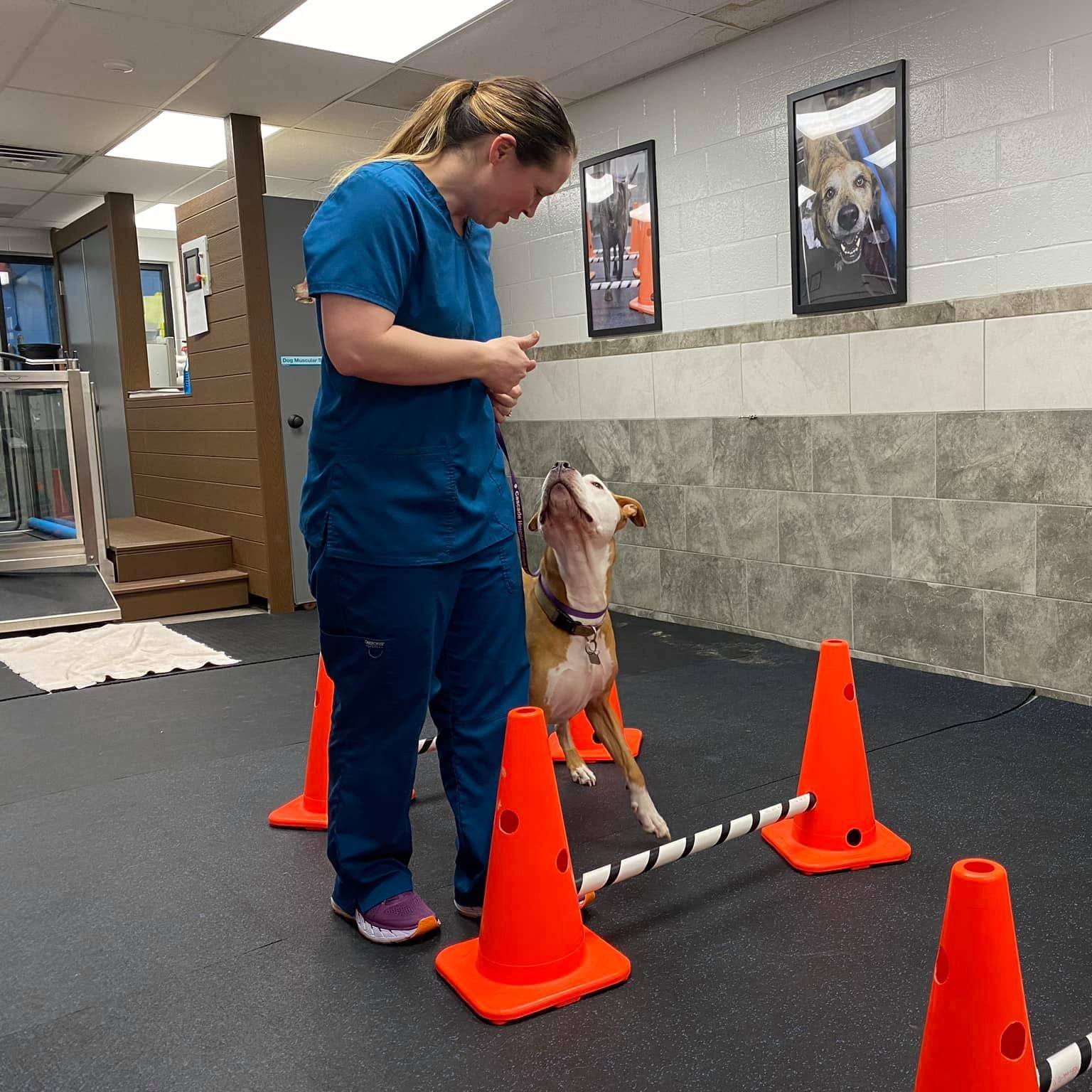
New Year’s Resolution: Help Your Pet Lose Excess Weight
When it comes to New Year’s resolutions, we often step on the bathroom scale and vow to shave off a few pounds in the coming year. We know that we will have more energy and feel better if we control our diet and exercise to lose excess weight – even during the winter months.
But did you ever consider making that same resolution for your trusty buddy – your dog or cat – as well?
 Certified Canine Rehabilitation Nurse and LVT Emily Harkness helps overweight and healthy-weight pets alike with their strength and mobility.Last year more than half of all dogs and cats in the United States were suffering from pet obesity, which can cause a number of health-related issues and shorten the lifespan of your pet, according to the Association for Pet Obesity Prevention.
Certified Canine Rehabilitation Nurse and LVT Emily Harkness helps overweight and healthy-weight pets alike with their strength and mobility.Last year more than half of all dogs and cats in the United States were suffering from pet obesity, which can cause a number of health-related issues and shorten the lifespan of your pet, according to the Association for Pet Obesity Prevention.
Staying in shape isn't always easy for our pets, says LVT Emily Harkness, who is also a Certified Canine Rehabilitation Nurse, but it is vitally important. "There are many health issues associated with being overweight for pets," she says. "Diabetes and heart disease are just a couple we often discuess. As a rehab nurse, I deal with how it affects their mobility. Joints and muscles are negatively affected by excess weight. Pets slow down, get winded, or may be reluctant to go on their normal walks and some even become lame or start to limp the following day. By keeping your pets lean you can decrease the amount of work the joints and muscles need to do, so they feel and move better in the long run."
Beside the obvious visual signs, there are behavioral signs that it might be time to change your pet's habits to help them lose weight. "As pets gain weight, they become reluctant to be as physically active as they previously were," says Emily. "Subtle changes can occur as well. Maybe they won't jump into the car or on the bed with as uch vigor as they previously had. Sometimes dogs turn around and want to go home before their normal walk in completed or maybe they don't bother to greet you at the door when you get home. These are all subtle clues that somehing is not quite right and it's best to call your veterinarian to discuss these changes and keep their weight assessed."
It’s not hard to help your dog or cat to get back into shape, though – it just takes good information and a little determination.
Dogs and cats will take as many treats as you give them, in addition to generous quantities of regular food. "Treats are fine," says Emily, "just not every day. Low-calorie substitutions are helpful; many dogs like carrots and green beans and these are a great way to feed them instead of whatever you may be eating at the table."
Figuring out the right balance for their regular food servings is also key. "If you need assistance in figuring out how much to feed your pet, we can help figure out their caloric intake based on the food you choose and their activity level," says Emily.
And when it comes to their activity level, that's something important to keep up with, even in the winter when pets and owners are less eager to go outside. "Tossing the ball, going for a daily walk, or working on obedience exercises are all ways to increase your god's activity," says Emily. Some factors that may influence their activity level include the age of the pet, whether they are intact or neutered, and how much exercise they can get on a regular basis. Exercise can be tougher for older pets that may have some arthritis. One possibility for older dogs is the underwater treadmill available Cascade Hospital for Animals that removes some of the pressure on arthritic joints. For active dogs without arthritis, the hospital’s Crate Escape dog day care is another great way for them to burn off energy.
Weight control for cats is largely diet based, but owners can try to encourage indoor exercise with mouse toys and laser pointers. Cats should have a wellness checkup and bloodwork before engaging in a diet.



